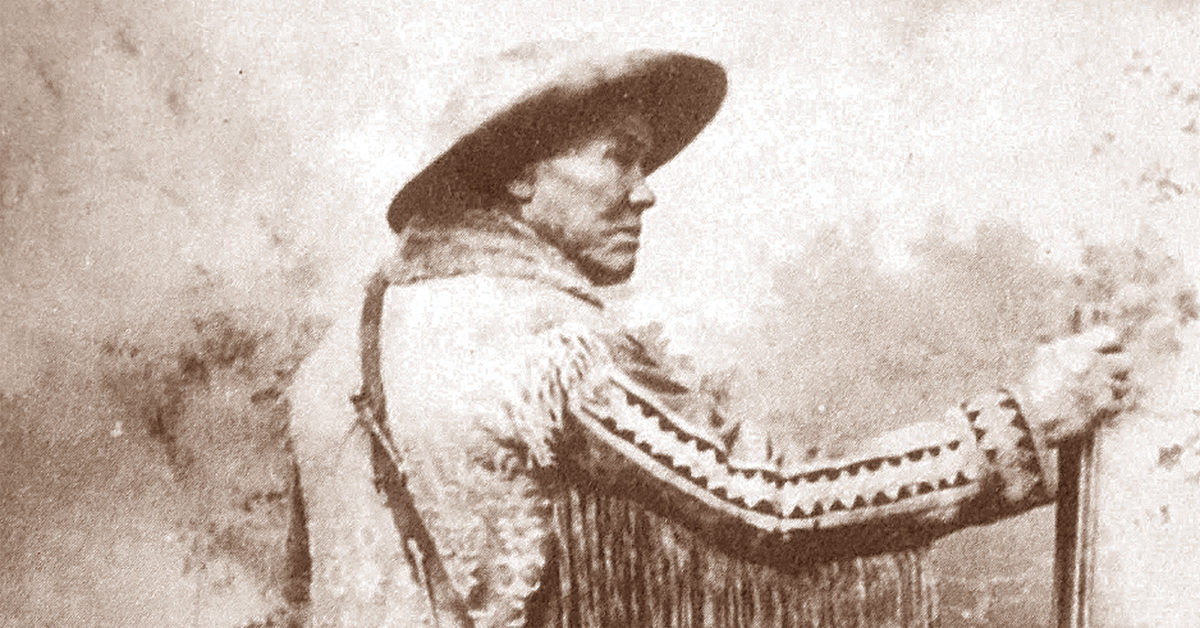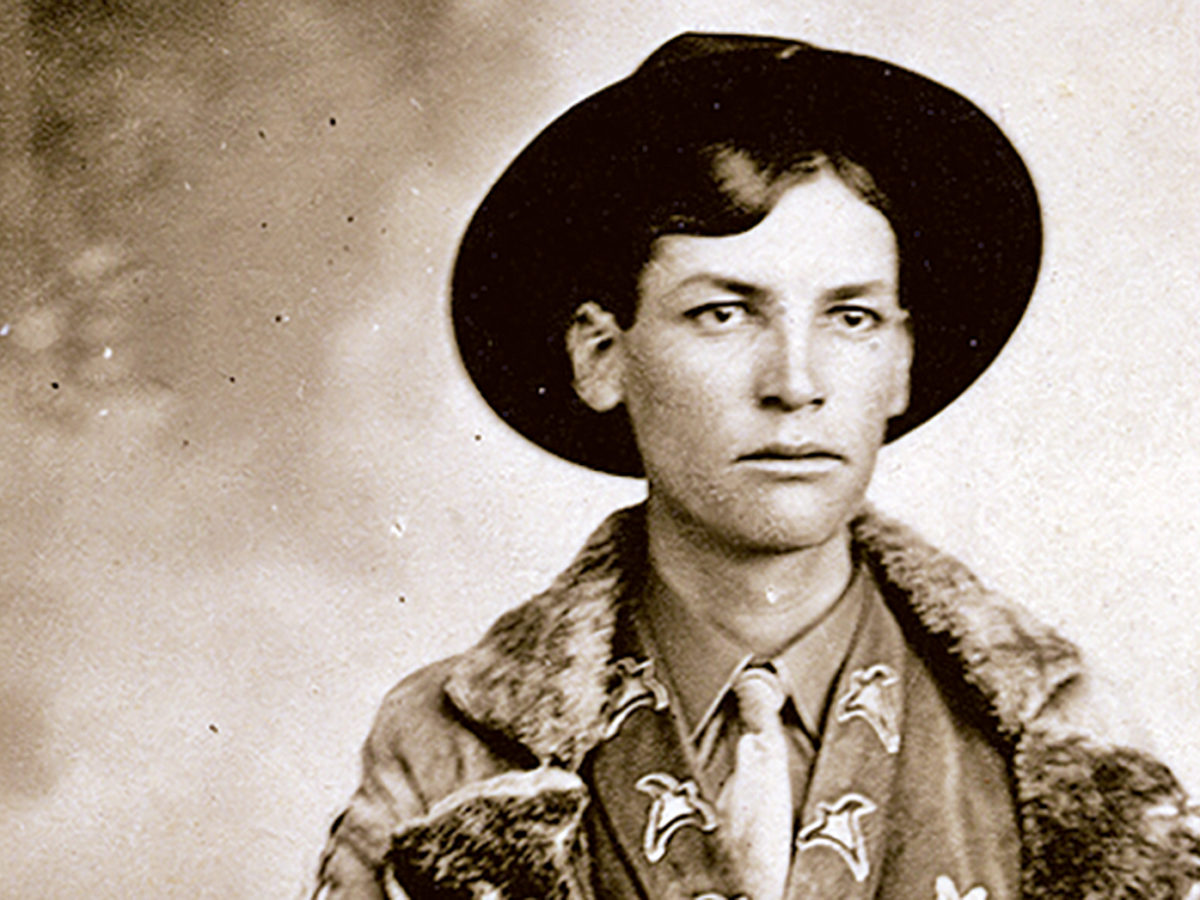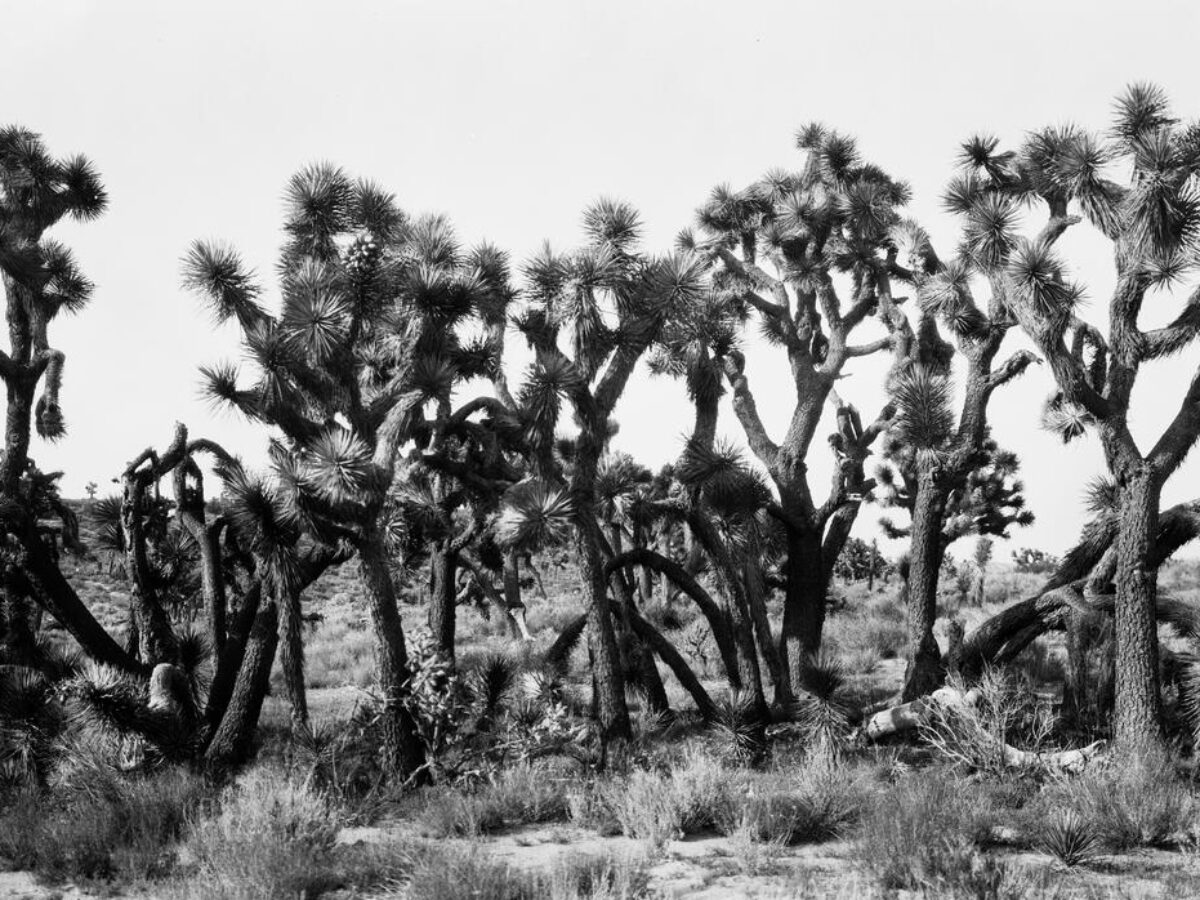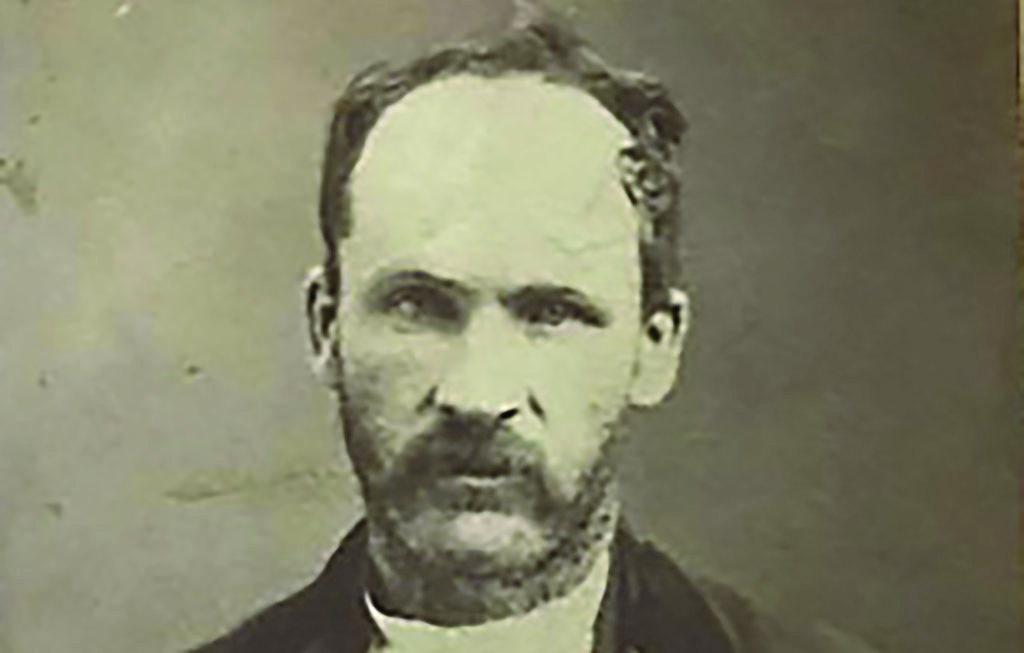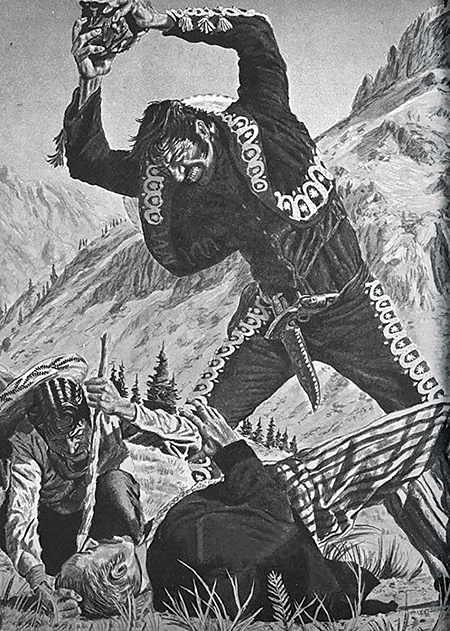
In March 1863 the “Bloody Espinosas,” as brothers Felipe and Vivián would become known, began a reign of terror in central Colorado Territory, randomly murdering and mutilating residents and travelers alike. Over a two-month period they killed as many as 32 people, giving them the dubious distinction of being perhaps the first serial killers in the Western United States. Seeking to justify the killings, Felipe journaled about how he and his family had been victimized and left destitute by white Americans, and he recounted a dream in which the Virgin Mary had ordered him to kill 600 gringos.
In late April 1863 a citizens’ posse managed to corner the brothers and kill Vivián, temporarily halting the murder spree. But that fall Felipe recruited young nephew José Espinosa and resumed his depredations, recording at least one more killing. Then, in early October the pair ambushed a wagon west of Sangre de Cristo Pass. Unfortunately for them, the driver and passenger escaped and reported the crime to Lt. Col. Samuel F. Tappan, the commander at Fort Garland, in the nearby San Luis Valley. Tappan immediately sprang into action, or rather he called back into action former Army scout and esteemed tracker Tom Tobin—the perfect man to send after the notorious Espinosas.
WHo Was Tom TObin?
Thomas Tate Tobin was born in St. Louis on May 1, 1823, to Irish immigrant father Bartholomew Tobin and wife Sarah (née Tate) Autobees, a widow of mixed white and Indian blood who’d brought into the marriage a son named Charles (who later styled his surname Autobee, without the “s”). In 1828, five years after his half-brother Tom’s birth, 16-year-old Charles left home to trap beaver. He returned to St. Louis in 1837 but soon turned back west, this time with 14-year-old Tom, whom he taught wilderness survival skills.
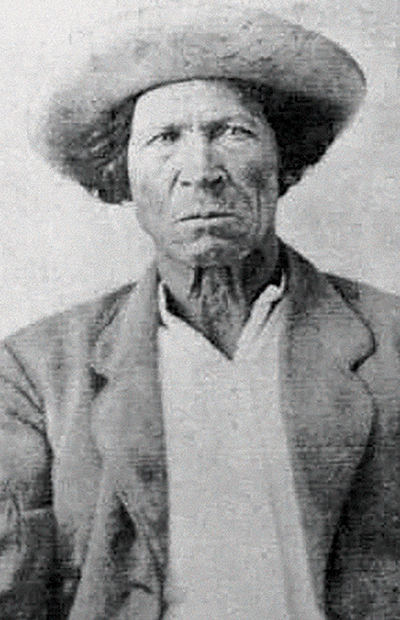
Autobee and young Tobin headed to Taos in New Mexico, then a territory of Mexico. The half-brothers worked at Simeon Turley’s mill and distillery, the latter famed for its 188-proof Taos Lightning, flavored with chili powder, gunpowder and tobacco. They made pack trips to deliver Turley’s whiskey and flour to places like Bent’s Fort and El Pueblo, in what would become Colorado, and also traded with Indians for beaver pelts and buffalo robes they then sold in St. Louis. In 1846 Tobin married 17-year-old María Pascuala Bernal, and the couple made their home near the mill at Arroyo Hondo. (Pascuala, as she was known, was actually a distant cousin of Felipe Espinosa. Regardless, she and Tom would have a passel of children and remain together until her death at age 57 on Jan. 1, 1887.)
That year marked the start of the Mexican War, followed by the unopposed U.S. occupation of New Mexico and establishment of a provisional government. Life went on much as usual for the newlywed Tobins and neighbors. That is, until the outbreak of the Taos Revolt on Jan. 19, 1847. Mexican rebel Pablo Montoya, the self-proclaimed “Santa Ana of the North,” and Pueblo Indian cohort Tomás Romero led the bloody uprising against American rule. That day the insurrectionists murdered several government officials, including civilian Governor Charles Bent. The next day some 500 Mexicans attacked and laid siege to Turley’s mill, where Tobin and Autobee were working. Autobee rode off to seek help at Santa Fe while Tobin and a handful of others tried to defend the mill against impossible odds. The fighting continued into the night before rebels set fire to the mill. Only Tobin and one other defender managed to escape. In the aftermath Tobin and Autobee served as scouts in a company of volunteers led by fur trader Ceran St. Vrain that ultimately helped hunt down the insurrectionists and quash the revolt.
Recommended for you
Was Tom Tobin As Good a Scout as Kit Carson?
In 1848 Lt. Col. William Gilpin of the 1st Missouri Volunteers, encamped near Bent’s Fort, hired Tobin as a scout and courier. By all accounts he served well. Tobin lived for a time among the Indians and became a gifted tracker who could reportedly “track a grasshopper through sagebrush.” Some contemporaries considered him the only man who could surpass the legendary Kit Carson in shooting, scouting and tracking. Tobin rode with Carson and worked with such other Western notables as Uncle Dick Wootton, Buffalo Bill Cody, John C. Frémont and Benjamin Lloyd Beall. In 1858 Autobee was hired to supervise the adobe construction of Fort Garland. After he was wounded in a stabbing, Tobin stepped in to complete the fort.
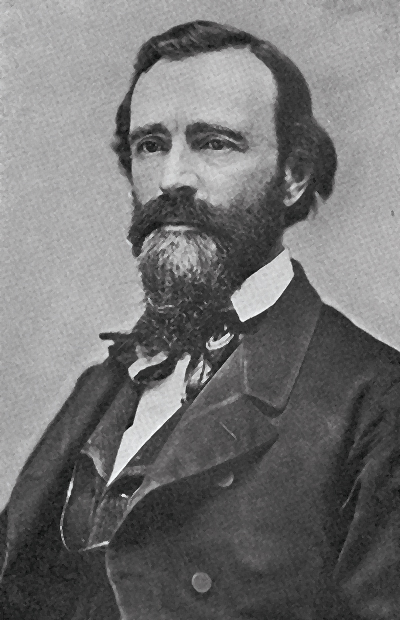
Five years later, in October 1863, Tobin was raising horses and cattle on his ranch near Fort Garland, anticipating the birth of a child by wife Pascuala, when a soldier rode out to summon him to the fort. Colonel Tappan had urgently requested Tobin’s presence. Although he was 40 years old, Tobin’s hair remained jet black. His preference was to dress in all black, from his hat to his boots, and to sit a black saddle on a black horse. At 5-foot-7 and weighing at the most 140 pounds, the bowlegged former scout wasn’t exactly imposing. Still, Tappan found him an impressive figure, with his big-bladed hunting knife, an 1851 Navy Colt holstered in buffalo hide, with rump hair and tail intact, and a 15-pound .53-caliber Hawken rifle (shoulder height on Tobin) with which he claimed to have already killed 10 men (“red, white and Hispano”). What’s more, Tobin had proved himself on the Western frontier, displaying all the skills necessary to track down one of the most vicious killers ever to come down the pike—Felipe Nerio Espinosa.
THe Bloody EspinoSas’ Rampage
On March 16, 1863, Franklin Bruce kissed his bride goodbye at home in Cañon City, Colorado Territory, and headed up Hardscrabble Creek for his sawmill. He never made it. Neighbors found his body. Shot through the heart, he’d been stripped naked and mutilated, a large cross carved into his chest with a knife. Two days later sawmill owner Henry Harkens was found dead at his cabin near present-day Colorado Springs. He’d been shot in the forehead, his head split open with an ax. The terror continued for weeks as the killers left a string of bodies as far north as Ute Pass. Some corpses were found with crude stick crucifixes protruding from bullet holes in their foreheads. Territorial officials mustered the 1st Colorado Cavalry into the field to track down the murderers, but troopers failed to catch even a glimpse of them. Governor John Evans posted a bounty for the elusive killers. “The people are scared nearly to death here,” one soldier journaled. “None but the bravest dare go out at all.”
A break finally came, though, after lumberman Edward Metcalf survived an April 25 attack to relate a harrowing story. He’d been driving his wagon on the road east to Fairplay when a rifle ball smacked into his chest, tumbling him into the wagon box. The shot might have proved fatal were it not for a copy of President Abraham Lincoln’s recent Emancipation Proclamation folded up in Metcalf’s breast pocket. Miraculously, it stopped the bullet. As his frightened oxen bolted, bearing the wagon down the road and out of reach, Metcalf saw two Mexicans emerge from the timber. It was later discovered the Espinosas had been in the act of mutilating their latest victim, lumberman Bill Carter. Metcalf and another man alerted by the shots described the assailants to authorities.
a Posse to Hunt the Bloody EspinoSas
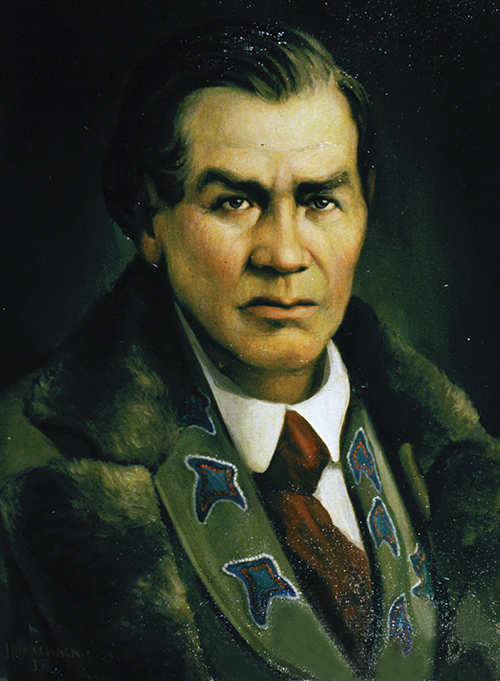
Volunteers in the California Gulch mining district quickly formed a posse of 17 men led by John McCannon. They crossed Weston Pass into South Park, where more men joined the hunt. Setting out on a cold morning in early May, the posse spent several tension-filled days following a trail of hoofprints in the soft, wet ground, several times finding campsites in which ash still smoldered in the fire rings. At dawn on May 8 they spotted two hobbled horses below them in a gulch, though there was no sign of their riders. McCannon split his force, and the groups closed in from opposite directions. Vivián Espinosa was the first to appear, and as he moved to release the horses, posseman Joe Lamb fired a shot, knocking him to the ground. Vivián tried to rise while reaching for his revolver, but posseman Fred Carter fired a second shot that struck the killer between the eyes. The shots brought Felipe crashing from the thicket. On finding his brother dead on the ground, he ran off into the brush. The possemen, uncertain whether the fleeing figure was friend or foe, held their fire. Realizing their mistake, they pursued Felipe, but the surviving brother slipped away over the canyon rim.
While they had let the most dangerous of the Espinosas escape, the posse had at least managed to stop one cold. More important, in a buckskin pouch on Vivián’s body they found personal papers. Authorities finally had names to go with the faces, and in coming weeks newspapers dubbed the fugitive killers the “Bloody Espinosas.” After severing and bagging Vivián’s head as proof of their accomplishment, the posse buried the outlaw’s body.
After severing and bagging Vivián’s head as proof of their accomplishment, the posse buried the outlaw’s body
In the wake of Vivián’s death the killings ceased, and some expressed optimism Felipe must be dead or dying somewhere, perhaps down in Old Mexico. Rumors were rife. One had him returning to the site of his brother’s death and carrying off his severed feet as a keepsake. Another claimed he’d composed a schizophrenic ode to himself that went, “Felipe le dice a Nerio / Vamos matando este gringo” (“Felipe tells Nerio / Let’s kill this gringo”). It soon became apparent Felipe had neither died nor given up his crusade against Americans. By October he was back on the outlaw trail, riding with nephew José Vincente Espinosa, the latter all of 14 years old.
One Woman’s Terrible Ordeal With the Espinosas
On October 10 storekeeper Leander Philbrook was descending west from Sangre de Cristo Pass in a buggy with passenger Dolores (“Lola”) Sánchez—en route from Trinidad, Colorado Territory, to Costilla, New Mexico Territory—when the Espinosas opened fire, missing their mark. Philbrook fled afoot up a steep mountainside, hotly pursued by Felipe and José, while Sánchez hid behind a boulder. Soon down the road trundled two other Mexican men in a wagon. Emerging from hiding, a frantic Sánchez explained what had happened. Driver Pedro Garcia told her to get into the wagon box and hide. She did so just as the Espinosas, having lost Philbrook, re-emerged on the road.
GET HISTORY’S GREATEST TALES—RIGHT IN YOUR INBOX
Subscribe to our HistoryNet Now! newsletter for the best of the past, delivered every Monday and Thursday.
According to one account, Felipe screamed, “Put that prostitute of the American out of the wagon, or we will fire on you!” Garcia refused, but Sánchez intervened. “Don Pedro, don’t perish for me,” she said, climbing down from the wagon. “They are Christians and won’t hurt me.” Garcia and his passenger pleaded with the Espinosas not to shoot the woman. “Go ahead,” Felipe ordered them, “and if this woman is found dead, you can tell the people that the Espinosas of the Conejos killed her!”
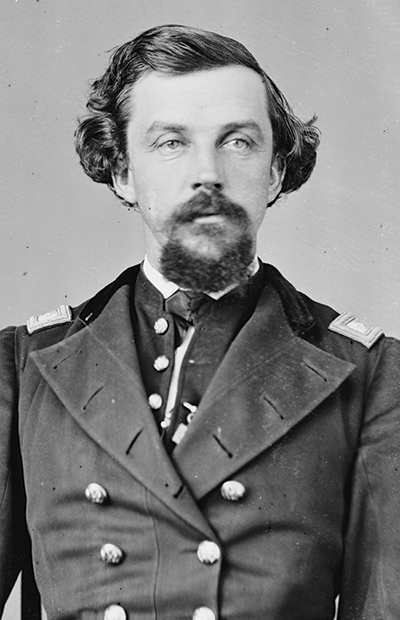
The Espinosas did not kill Sánchez, but neither were they Christians. After raping her, they bound her securely, hand and foot, swearing to return after taking care of her gringo companion. But Philbrook, a veteran of the 1st Colorado Volunteers, continued to elude them and reached Fort Garland by evening. Meanwhile, Sánchez managed to free herself and hide from the Espinosas. The next morning she flagged down patrolling troopers, who brought her to the fort. It was at that point Colonel Tappan summoned Tobin.
“He told me to go see the woman,” the tracker recalled. In conversation with Tobin at Fort Garland an exhausted Sánchez told him of the Espinosas’ disgraceful abuse and described them in detail. Tobin wanted to pursue the fugitives alone, but Tappan insisted he take a detachment of troopers. “Be careful not to make a mistake,” the colonel further advised, “and bring other parties,” a likely reference to hot-blooded citizens’ posses then sweeping the region.
TobIN on the Trail
The next morning, October 12, Tobin left Fort Garland with Lieutenant Horace W. Baldwin and 15 troopers—including scout Timothy G. Graham—a civilian scout named Loren Jenks and young teen Juan Montoya, whom the tracker had brought along to lead his horse whenever he dismounted. Starting from the site where the Espinosas had stopped Philbrook’s buggy, Tobin made ever-widening circles—sometimes on all fours, face planted to the earth—until he “cut sign,” identifying the tracks of two ponies. It was young Montoya, not Tobin, who caught the first glimpse of the Espinosas. As the tracker had ridden ahead, the boy told Lieutenant Baldwin, “Ahí van dos hombres a caballo!” (“There go two men on horseback!”). But Baldwin didn’t speak Spanish. By the time he clued in and rode after the Espinosas, he could only watch in frustration as they spurred out of sight over a ridge.
The next day the group scattered in the mountains to follow several intersecting tracks, most left by local Utes’ ponies. Jenks and most of the troopers became separated from the detachment for the duration of the hunt. Baldwin, Montoya, Graham and the four remaining troopers followed Tobin as he traversed the rough terrain, often crawling on his knees through thick underbrush. The party camped for the night on La Veta Mountain and spent the next day searching in vain.
Felipe bellowed like a bull and cried out, ‘Jesus, favor me!’ and cried to his companion, ‘Escape, I am killed!’
On the morning of the fourth day, October 15, Tobin came down La Veta Creek (present-day South Abeyta Creek, near the town of La Veta) and discovered the tracks of two oxen. On finding one of the oxen roaming free, he deduced the Espinosas were driving the other as a source of food. Even so, the terrain made tracking difficult. “It was only by the broken twigs that I could follow them,” Tobin recalled. “Many places I would crawl under the fallen timber to keep the direction they were driving the ox.”
Tobin Finds His Target
Stepping out into a clearing, Tobin saw birds circling in the sky just ahead and suggested to the others that meant the Espinosas had killed one of the oxen. The fallen timber was too heavy to traverse on horseback, so Tobin told the others to wait in a clump of trees while he crawled ahead with Montoya. He relented when three troopers volunteered to join him. After crawling about 100 yards, Tobin recognized the birds as squawking magpies—feathered “camp robbers” that undoubtedly signaled their proximity to the Espinosas’ camp. After warning the soldiers not to speak or fire their guns until otherwise directed, the tracker inched forward alone.
Positioning himself behind a fallen log, Tobin was able to get a good look at the campsite. Felipe, with a bushy beard and a distinctive deep scar running the length of his left cheek, was hunched over the campfire. The carcass of the ox hung from a nearby willow. As Tobin watched, Felipe rose to carve steaks from its rear shank for roasting, then returned to the fire. The tracker didn’t see José, who was down in a ravine tending to the outlaws’ horses.
“At this time I stepped on a stick and broke it,” Tobin recalled in an 1895 deposition taken at Fort Garland. “[Felipe] heard it crack…and saw me. He jumped and grabbed his gun. Before he turned around fairly, I fired [with his Hawken rifle] and hit him in the side. He bellowed like a bull and cried out, ‘Jesus, favor me!’ and cried to his companion, ‘Escape, I am killed!’”

Felipe slumped facedown into the fire, singeing his whiskers before he could roll out, while José bolted from the ravine toward a distant aspen grove. “I tipped my powder horn in my rifle [and] dropped a bullet from my mouth into the muzzle of my gun while I was capping it,” Tobin said. He shouted in Spanish for José to stop, but young Espinosa instead turned and fired at the tracker, missing wide. The teen had again broken into a run when Tobin fired, striking him in the small of his back. José dropped dead with a shattered spine.
Felipe had crawled away from the fire and was still clinging to life, waving his revolver over his face, when Tobin reached him. The outlaw cursed the tracker. “I had run down to where he was,” Tobin recalled. “I spoke to him and asked him if he knew me. I told him who I was.” As the troopers moved up, Felipe hissed, “Brutos” (“Brutes”). Suddenly, Tobin yelled, “Look out, he will shoot you!” Felipe did in fact fire wildly. After disarming his quarry, Tobin dragged the elder Espinosa by his scorched hair, drew his neck over a log, unsheathed his knife and neatly severed Felipe’s head from his body. He then had the boy, Montoya, behead José, also for purposes of identification. They left the corpses where they had fallen.
Felipe’s diary contained descriptions of several brutal murders alongside his self-justifying rantings for having killed Americans—32 by his count
Evidence of the Espinosas’ Crimes
Among the items Tobin and party found in the outlaw camp were Sánchez’s personal effects, as well as Felipe’s diary and several letters. The latter contained descriptions of several brutal murders alongside Felipe’s self-justifying rantings for having killed Americans—32 by his count. Denver’s Weekly Commonwealth later published translated excerpts from the documents, including the following bizarre, quasi-religious passage in a letter addressed to Felipe’s wife:
I am blessed with the milk from the breast of the Holy Mother Mary! I am covered with the cloak of the Holy San Salvador! I am defended by the sword of the Holy St. Paul!
I am looking after animals and my enemies.
They have hands and cannot touch me;
They have feet and cannot catch me;
They have eyes and cannot see me;
They have ears and cannot hear me.
Without further ceremony, Tobin dropped the killers’ heads into a discarded gunnysack, lashed it to his saddle and mounted up. Bound southwest for Fort Garland, the group made camp that night on the slopes of the Sangre de Cristo. Spirits were high, and all slept well. The next morning, October 16, the weary procession arrived at the fort. As luck would have it, Colonel Tappan, his officers and their wives were out riding. Tobin sent the colonel’s orderly to fetch him while he waited in the commandant’s office.
‘So-So’ Luck
When Tappan returned to the post with his riding party, he asked, “Tom, did you have any luck?” Rolling the heads from the gunnysack, the tracker nonchalantly replied, “So-so.” Several of the officers’ wives screamed, and a couple fainted. The colonel himself turned green and sat down quickly. Tappan then told his orderly, “Take those nasty things and bury them.”
Such was the ignominious fate of the Bloody Espinosas.
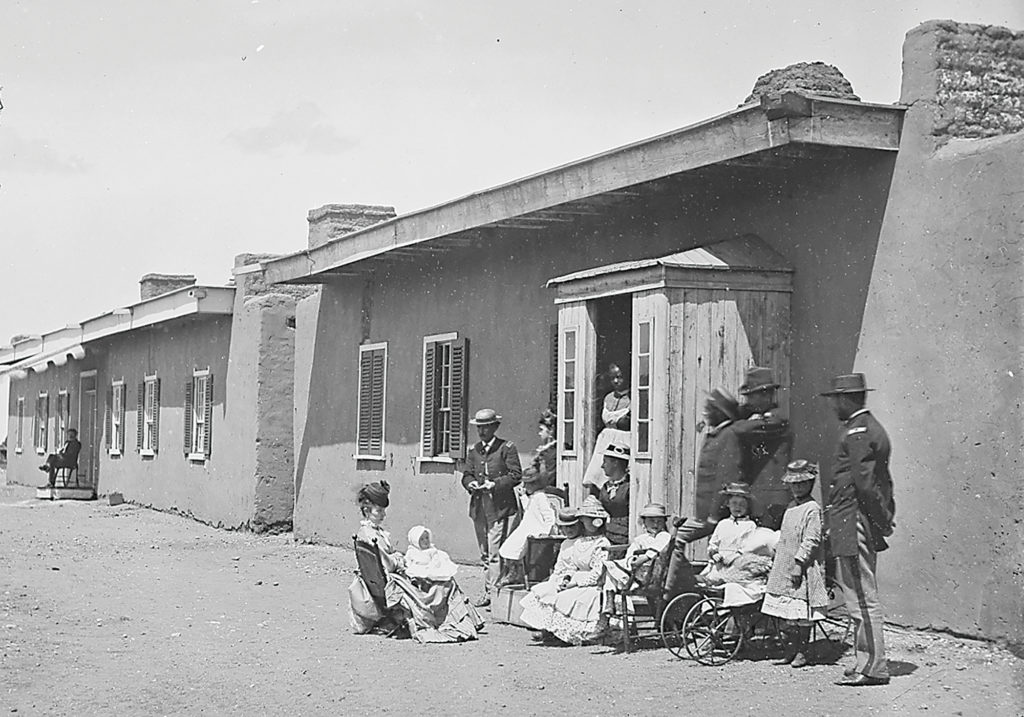
Aftermath of the hunt
The baby Tom Tobin had been anticipating—a daughter he and wife María Pascuala named María Pascualita—arrived on Oct. 23, 1863, a week after his return to Fort Garland. In 1878 Pascualita Tobin married Kit Carson’s son Billy. A decade later, on learning a drunken Billy had mistreated her, Tobin went after his son-in-law with a knife. Young Carson fended off Tobin with a sledgehammer and then shot Tom in the groin. The in-laws ultimately reconciled, but Tobin suffered from the wound to the end of his days.
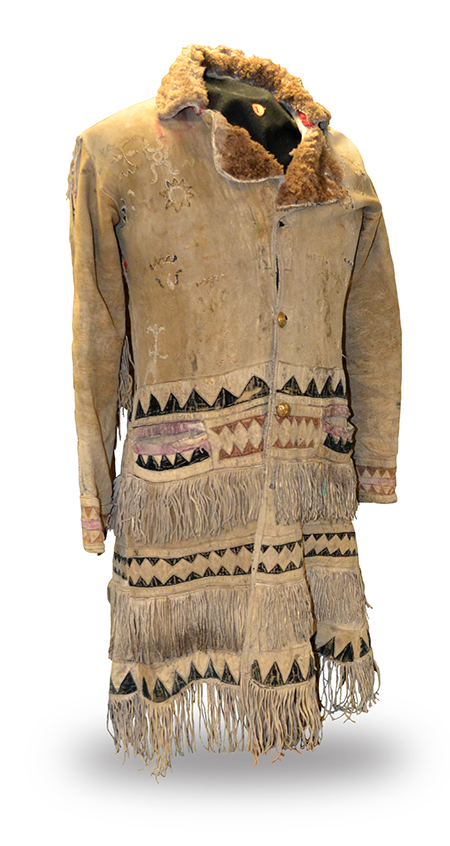
For having killed the two Espinosas in October 1863, Tobin was entitled to the bounty (reportedly as much as $2,500) posted by Colorado Territory Governor John Evans, though the tracker later claimed ignorance of any bounty. Regardless, Evans never paid a penny to Tobin. In 1866 Alexander Cummings, Evans’ successor as governor, gave Tobin an elaborately decorated buckskin coat. Tom later wore the coat in several portraits, while the military presented the tracker with a limited-edition Henry rifle. Only later did Tobin receive any money. Several years after the bloody incident Territorial Governor Edward M. McCook gave Tobin $500, and in 1893—three decades after the deaths of Felipe and José Espinosa—Governor Davis Hanson Waite gave him $1,000.
From Manhunter to School board member
Despite the fact Tobin could only write his name, he served two years (1893–95) on the Costilla County School Board. One year on the opening day of class he visited the schoolhouse and delivered a memorable address to teacher Nettie Calkins and her young students.
“If any of these brats disobey or are mean, just let me know,” the grizzled tracker quipped, “and I will cut out their hearts.” That time he presumably kept his knife sheathed.
Tobin was notorious for scrambling the dates of relevant events in his life, which has led to some confusion for historians. It is certain, however, he died virtually penniless on his ranch on May 15, 1904. He and wife Pascuala (who preceded him in death in 1887) are interred in the private Mac Mullan Cemetery in Blanca, near Fort Garland. Not only is he little remembered today—at least in comparison to colleague and in-law Kit Carson—but his tombstone bears a birth date different from that found in historical literature, and his inscribed name is misspelled TOBEN. WW
Author Daniel Joseph Sanchez-Leonetti is a Colorado-based novelist and screenwriter who has worked for various newspapers and magazines in the Southwest. For further reading he suggests Season of Terror: The Espinosas in Central Colorado, March–October 1863, by Charles F. Price; Tom Tobin: Frontiersman, by James E. Perkins; and Tom Tobin and the Bloody Espinosas, by Bob Scott.

